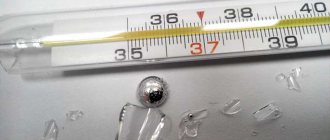Doctors call coughing up blood “hemoptysis.” This is the expectoration of blood or blood with mucus, which occurs when coughing. If there is blood in the mucus, this can be detected by the presence of characteristic streaks of blood, as well as the color of the mucus, which turns red or pink. Coughing up blood can occur in adults and older children and is rarely seen in young children.
When a person coughs up blood, the source of the blood is either the lungs or the upper respiratory tract. A nosebleed or stomach bleed may look similar to coughing up blood, but it is not the same thing.
If a person coughs up a large amount of blood, doctors call it “extensive hemoptysis.” This should be a signal for immediate hospitalization. This article will focus on hemoptysis, which does not require an emergency call to the ambulance.
Coughing up blood: causes of illness in adults
In some cases, when the cough is strong, dry and hysterical, a small amount of scarlet blood in the sputum may be the result of damage to small superficial vessels in the bronchi, pharynx or trachea. This phenomenon is not dangerous if it is not accompanied by other alarming signs. However, if the cough does not subside, the symptoms increase, the volume of blood is significant, or the streaks do not disappear, this may be a sign of serious problems and illnessesSource: EarwoodJS, ThompsonTD. Hemoptysis: evaluation and management // Am Fam Physician. 2015 Feb 15;91(4):243-9..
Harmless reasons
Sometimes streaks of blood occur when coughing is caused by allergies or colds. This occurs due to mechanical damage to the capillary. This condition, as a rule, does not require treatment; the amount of blood released is very small. Some patients experience brownish sputum or small amounts of blood during therapy with anticoagulant medications. This happens due to the ability of drugs to thin the blood.
Sometimes a slight discharge of blood during coughing occurs due to damage to the capillaries
A slight discharge of blood is diagnosed when children cough. Due to the weakness of the capillaries, they can be damaged. In addition, the causes of such a symptom can be severe physical stress and emotional distress.
Important! If bleeding is isolated, do not sound the alarm and run to the doctor. If the symptom repeats several times and is combined with a general deterioration of the condition, you should immediately visit a specialist.
What diseases are typical for hemoptysis?
The appearance of sputum with blood when coughing is called hemoptysis, it is possible with various diseases:
- COPD with severe bronchitis or emphysema;
- pneumonia (acute or exacerbation of chronic);
- tuberculous lesions of the lungs and bronchi;
- cancerous tumor in the lungs;
- injuries to the chest and lung tissue.
In addition, impurities of blood in coughed up mucus are possible with lesions of the nasopharynx (including nosebleeds) and the upper parts of the digestive tract.
If cough or hemoptysis appears, even without fever, it is important to consult a doctor. This is especially dangerous if symptoms such as fever, shortness of breath, severe weakness, pain in the body or limbs appear against the background of coughing up blood. You need to call an ambulance immediately. Such an attack may be a symptom of a serious illness. It is important to immediately determine the correct diagnosis and begin treatment. Source: K. Krenev, Ya Kabysh, O Yudin. Difficult patient or patient with hemoptysis // Sciences of Europe, 2022, No. 48, pp. 17-22.
2. Reasons
The most common cause of hemoptysis is diseases of the respiratory system. Here it should be remembered that a cough is a repeated spastic contraction of the respiratory muscles with forced exhalation (inhalation may be difficult and incomplete), most often caused by inflammatory, mechanical or chemical irritation of the upper respiratory tract - trachea, bronchi, larynx, as well as nasopharyngeal or pleural receptors.
Accordingly, infectious and inflammatory processes lead among the causes:
- tuberculosis;
- “smoldering” suppuration in pathologically distended incompetent bronchi (chronic bronchiectasis);
- some specific types of bacterial (less often viral) pneumonia;
- abscessing inflammatory process in the lungs;
- clinically significant bronchitis, acute or chronic.
The second most common group of causes are tumors, both malignant neoplasia in the lungs and benign formations in the bronchi (for example, adenoma).
Other reasons include:
- pulmonary thromboembolism (in turn, which can occur under the influence of various factors - thrombophlebitis, surgery, etc.);
- some types of severe cardiac pathology (rheumatism, congenital or acquired defects);
- trauma and/or foreign body in the lungs;
- diseases of the upper gastrointestinal tract;
- some genetic, autoimmune, idiopathic diseases (cystic fibrosis, Wegener's granulomatosis, hemorrhagic diathesis, pulmonary hemosiderosis, etc.).
Finally, some sources emphasize that from five to fifteen percent of cases of coughing up blood remain etiologically unclear, i.e. the cause is not identified even with a comprehensive examination.
Visit our Pulmonology page
Diagnostic methods
Since coughing up blood can be a sign of a serious illness, it is important to make a diagnosis as quickly and accurately as possible. A complex of laboratory tests and necessarily radiography or CT, ultrasound or MRI are required to determine the source of bleeding, especially if it is severe enough. Sometimes blood may not come from the respiratory system, but from soft tissues, the pleural cavity or the esophagus.
A detailed medical history is important - all health problems that preceded the appearance of the cough (smoking, injuries, colds, abdominal pain, etc.). They may indicate possible causes. If the source of bleeding is in the bronchi, an additional bronchoscopy may be prescribed. All diagnostic procedures are usually performed during hospitalization in a clinic.
1.General information
First of all, a few general words should be said about those situations when a person sees his own blood outside the body. If this is a medical procedure (for example, blood sampling for clinical analysis), or a superficial scratch (which, however, must also be aseptically treated to avoid infection), or menstrual blood in women (without any deviations from the established cycle) - worry, Of course it's not worth it.
But any other appearance of blood, even in small or barely noticeable quantities (any signs of hemorrhage, bleeding ulcers, “leaking” effusion, etc.) is in all cases a serious situation, requiring consultation, examination and medical intervention, and often ( depending on a number of circumstances), assistance should be provided not just “in the near future,” but on an urgent or emergency basis.
This is especially true for massive blood impurities in urine, feces or expectorated sputum: such phenomena never arise “just like that” - this is a symptom, and in medicine it is considered one of the most formidable.
Coughing up blood, tasting or having blood in the mouth can have many different causes.
Some of them may not pose an immediate threat to life and health. But this is one of those cases when it is definitely better to make a mistake like a “false alarm” by visiting or calling doctors “in vain” than to waste precious time and bring the situation to a critical or irreversible point.
A must read! Help with hospitalization and treatment!
Treatment
It is important to remember that hemoptysis is only a symptom. It is important to treat the underlying condition and make efforts to stop the bleeding. If these are inflammatory processes (pneumonia, bronchitis), a course of antibiotics and anti-inflammatory therapy in combination with drugs to regulate blood clotting are indicated. Regular cleansing of the bronchi from bloody sputum (sanitation) is also indicated.
If this is a tuberculosis lesion, anti-tuberculosis therapy is necessary, including surgical interventions on the affected lesions (cavities). For injuries and abscesses, the solution to problems is surgery; for cancerous lesions, tactics are selected individually, depending on the stage. Source: Ittrich H, Bockhorn M, Klose H, Simon M. The Diagnosis and Treatment of Hemoptysis // The Diagnosis and Treatment of Hemoptysis.Dtsch Arztebl Int. 2017 Jun 5;114(21):371-381. doi: 10.3238/arztebl.2017.0371..
4.Treatment
Therapy in any case will be etiopathogenetic in nature (as far as possible), i.e. The main target will not be the cough itself, but the factors that cause it. The range of therapeutic approaches in modern pulmonology (and medicine in general) is extremely wide; their specific choice is determined by the diagnostic results. In some cases, standard anti-inflammatory treatment is sufficient, in others there are absolute indications for emergency surgery, etc.
It is important to emphasize once again: a doctor’s consultation is needed urgently or urgently if:
- “bloody” sputum expectorated with a cough is very copious and/or has a strong unpleasant odor;
- cough mixed with blood occurs against the background of “unreasonable” recent loss of body weight, hyperhidrosis (excessive sweating), fatigue;
- cough is accompanied by signs of pulmonary hemorrhage (profuse, frothy scarlet blood).
Prevention
The main methods of preventing hemoptysis are preventing the pathologies that cause it. Quitting smoking, maintaining a healthy lifestyle, regular exercise, and timely treatment of colds are important.
Sources:
- Earwood JS, Thompson TD. Hemoptysis: evaluation and management // Am Fam Physician. 2015 Feb 15;91(4):243-9.
- Ittrich H, Bockhorn M, Klose H, Simon M. The Diagnosis and Treatment of Hemoptysis // The Diagnosis and Treatment of Hemoptysis.Dtsch Arztebl Int. 2022 Jun 5;114(21):371-381. doi: 10.3238/arztebl.2017.0371.
- K. Krenev, I am Kabysh, O Yudin. Difficult patient or patient with hemoptysis // Sciences of Europe, 2022, No. 48, pp. 17-22
First aid for pulmonary hemorrhage
What to do when a person has excessive bleeding from the lungs? If this condition develops, the patient should be hospitalized immediately. After calling an ambulance, you must do the following:
- Help the patient assume a semi-sitting position.
- The head should be raised.
- A person should spit out the secreted blood and should never hold it or swallow it.
- If the situation allows, you need to give the patient a cold drink or swallow some ice.
- When the patient is unconscious, his head must be turned to the side so that he does not choke.
After the ambulance arrives, doctors need to be informed under what circumstances the bleeding developed. This will help in further diagnosis.
Treatment of sputum with blood
Treatment of cough with sputum is carried out in a hospital, where the dynamics of the development of pathology are constantly monitored, the effectiveness of therapy is analyzed, and the volume of discharge is measured. Lung cancer, abscess, and a number of other severe pathologies will require surgical intervention.
Main groups of medicines:
- antitumor drugs - Cisplatin, Vinorelbine, prescribed for lung cancer;
- first-line tuberculostatic drugs for tuberculosis - Ethambutol, Isoniazid;
- antibiotics – Amoxiclav, Tavanik;
- antiviral drugs – Anaferon, Arbidol;
- mucolytics – Mucaltin, ACC, Gedelix;
- antiviral drugs - Erespal, Sinekod, Bronchipret;
- antitussive drugs with an anesthetic effect - Codeine, Glaucine.
After the patient’s condition improves, the patient is transferred to outpatient treatment, vitamin complexes and immunomodulators are prescribed to restore the immune system.
Causes of bloody sputum
Blood in the sputum may appear due to genetic abnormalities; the symptom indicates diseases of the respiratory system, heart and blood vessels; sometimes the causes are harmless. Hemoptysis (hemoptysis) develops against the background of an inflammatory process, fungal infection, or infection with parasites.
Blood when coughing - safe reasons
Bloody streaks in mucus are not always a sign of serious pathological processes.
Sometimes unpleasant symptoms are short-lived, disappear on their own within 1–3 days, occur without an increase in temperature, the person’s general well-being does not deteriorate, the sputum has a brown tint with streaks of reddish-rusty blood.
Why does blood appear from the throat:
- rupture of small capillaries in the bronchi during a hysterical cough;
- heavy physical effort;
- long-term use of anticoagulants.
Profuse hemoptysis is the most dangerous for humans - the daily volume of blood clots exceeds 500 ml.
Respiratory diseases
Hemoptysis often occurs with influenza, ARVI, and respiratory tract pathologies. The mucus contains red streaks, and sometimes pulmonary bleeding occurs.
Mucus with blood clots - what could it be:
- In case of bronchitis, bronchiectasis, pus and blood are released during coughing; the disease causes shortness of breath, decreased ability to work, and increased temperature.
- In case of pneumonia, when coughing up, mucus of a rusty color with scarlet clots appears. The disease is accompanied by high fever, signs of severe intoxication, shortness of breath appears even with minor physical effort.
- Lung abscess – profuse sweating, prolonged fever, pain during breathing, loss of appetite. The discharge is purulent with bloody patches and has a foul odor.
- With tuberculosis, the main symptoms are an increase in temperature to subfebrile levels, sudden weight loss, lack of appetite, purulent and bloody clots are observed in the sputum.
- Adenoma in the bronchi - when coughing, a little bloody sputum is released from the mouth, breathing becomes like hiccups, the person becomes weaker and loses weight.
- In case of lung cancer, the presence of metastases, sputum streaked with blood appears, coughing attacks are prolonged, accompanied by suffocation. The person begins to quickly lose weight and sweats intensely at night.
- With tracheitis, tonsillitis, laryngitis, the throat becomes very sore and sore, the voice becomes hoarse, the cough is dry with scanty pink discharge.
- Pneumothorax is a dangerous complication of lung injury, accompanied by shortness of breath, decreased blood counts, the patient becomes restless, complains of chest pain and lack of air. Without timely professional help, the condition can lead to death.
With sore throat, which is caused by streptococci, blood appears when coughing up due to improper mechanical cleansing of the tonsils from pus, which leads to tissue injury. If the causative agent of the disease is staphylococci, then against the background of a strong response of the immune system, vasodilation occurs in the area of inflammation, but the surface of the mucous membrane forms a red blood cell mass, which is discharged with mucus.
Hemoptysis is a symptom of a fungal infection in the lungs; it appears when helminths and protozoa penetrate the lung tissue.
The most common cause of blood when a child coughs is the ingestion of foreign objects. You need to call an ambulance immediately - the situation is life-threatening.
Cardiovascular pathologies are the main causes of blood discharge from the larynx
Important! Bloody sputum without cough is one of the signs of disturbances in the functioning of the heart and blood vessels; they are dangerous and require immediate specialized care.
List of main pathologies
| Disease | Characteristic signs |
| Pulmonary infarction, blockage of the pulmonary artery | Rare hemoptysis, sometimes constant bleeding for several days. Tachycardia, pain, severe shortness of breath, fever, cyanosis |
| Cardiac pulmonary edema | Severe and constant shortness of breath, copious sputum interspersed with blood of a foamy consistency |
| Mitral stenosis | Cough and hemoptysis appear with physical effort |
| Rupture or rupture of an aortic aneurysm | Frequent pulmonary hemorrhages, which can cause death |
Sometimes blood is present in saliva, which is associated with bleeding gums, dehydration, hypothyroidism, tuberculosis, and carcinoma. Mucus with bloody streaks may appear due to snot with blood - such symptoms often occur with a cold, increased intracranial pressure, and mechanical damage.
Sometimes hemoptysis occurs with endometriosis in women - the endometrium grows into the lung tissue, unpleasant symptoms appear during menstrual bleeding.
Hemoptysis due to congenital pathologies
Some congenital diseases of the bronchopulmonary system provoke the appearance of mucus with bloody spots.
Main pathologies:
- cystic fibrosis - the appearance of mucus with blood clots is caused by bronchiectasis;
- rupture of a bronchial cyst - purulent mucus with blood clots, pain when inhaling, possible development of pneumothorax;
- hypoplasia of the pulmonary vessels - shortness of breath, suffocation, cough and hemoptysis occur rarely;
- hemorrhagic telangiectasia - there are many hemorrhages on the body and mucous membranes.
If the blood is bright, foamy, and a slight sore throat appears before coughing, this means that the pathology is caused by a dysfunction of the respiratory system. If nausea appears before the attack, the blood in the sputum is thick, it is necessary to diagnose the digestive organs.
Other rare causes and pathologies
Sometimes it is very difficult to determine the nature of hemoptysis. This is especially true in situations where the problem is caused by conditions that are extremely rare. These include:
- sarcoidosis – damage to the lymphatic system of the respiratory organs, which causes the patient sweating, shortness of breath, dry painful cough, weight loss and other symptoms;
- thrombocytopenia, leukemia and other blood diseases - cause an increase in the volume of the liver, spleen, decreased immunity, and subcutaneous hemorrhages. Sputum when coughing often has a scarlet tint, which is caused by the penetration of blood into the vessels of the lungs due to their increased permeability;
- polyarteritis nodosa - accompanied by hemorrhages in the lung area. Patients with this pathology suffer from chronic bronchitis, pneumonia, severe cough mixed with blood;
- endometriosis in women - scarlet sputum can be caused by the germination of the endometrium into the lung tissue;
- systemic lupus erythematosus is a severe autoimmune disease that causes hemorrhages in the lungs, weakness, fever and other manifestations in patients;
- Wegener's granulomatosis - provokes hemoptysis, wheezing, scarring of the tissues of the respiratory organs, weight loss, the formation of ulcers in the nose and nasopharynx, hoarseness, difficulty breathing and other clinical signs.
The prognosis for a patient with the development of rare pathologies depends on the correctness of therapy, the characteristics of the course of the disease and timely diagnosis.
Survey
As we have already said, the causes of hemoptysis can be various pathologies. In this regard, it is important to undergo diagnostic measures in a short time in order to identify the pathology that caused the symptom.
The initial diagnostic methods are analysis of the patient’s complaints, external examination, as well as auscultatory examination. Primary diagnostic measures are performed by a therapist or pulmonologist. Then other specialists can get involved, for example, a phthisiatrician, an oncologist.
To obtain objective data, you must use:
- Polyposition radiography. It identifies the cause of the symptom in more than 30% of cases.
- X-ray contrast techniques, for example, angiopulmonography, arteriography.
- Computed tomography. It is highly informative and accurate (reveals the cause of the symptom in more than 70% of cases).
- Fiberoptic bronchoscopy. A unique informative method allows you to simultaneously carry out diagnostic and therapeutic measures, for example, a biopsy or cauterization of a bleeding vessel.
- Blood analysis. A general analysis is important to determine the degree of blood loss and the level of anemia.
- Study of bronchial secretions. Examination of discharge during symptoms for the presence of cancer cells, the presence of tuberculosis, fungi, and parasites.
- Diagnostic operations. They are performed when the cause of hemoptysis is not found. The purpose of such operations is to identify the source that caused the symptom and its destruction.
- Heart study. In this case, echocardiography is used, which makes it possible to detect cardiac defects and secondary changes affecting the myocardium.
The Onco.Rehab integrative oncology clinic takes care of your health. Our doctors are ready to assist you and advise you on any questions you may have.
Does blood when coughing always indicate pathology?
Having noticed bloody discharge when coughing, you cannot ignore this fact. In this matter, extra caution will not harm, despite the fact that, indeed, there are some harmless reasons that can provoke the appearance of a scarlet tint. Among them are:
- damage to capillaries due to severe coughing;
- intense physical activity;
- stress;
- taking medications that reduce blood viscosity.
In this case, minor streaks of blood or a brownish tint may be detected in the secretion when coughing. This symptom goes away on its own within 1–2 days.
Diagnostics
After an initial examination and medical history, the doctor prescribes a comprehensive examination using laboratory and instrumental diagnostic methods.
How to diagnose:
- General blood test - based on the number of leukocytes, lymphocytes, ESR, one can conclude about the presence or absence of inflammation. The platelet level will indicate the degree of clotting.
- X-ray - allows you to see the presence of symptoms of pneumonia, tuberculosis, abscess, malignant neoplasms and metastases.
- Sputum analysis for the isolation of Koch's bacillus.
- Bronchoscopy shows the condition of the lumen of the lower respiratory tract, the presence of neoplasms, and the condition of the vascular walls.
- If cystic fibrosis is suspected, an analysis of the secretions of the sweat glands is performed.
- FGDS - to examine the condition of the digestive organs.
- Angiogram – allows you to study the condition of the walls of blood vessels.
- ECG and ultrasound of the heart.
If mucus with bloody spots appears in a smoker in the morning, accompanied by a general deterioration in health, you should immediately visit a specialist.










